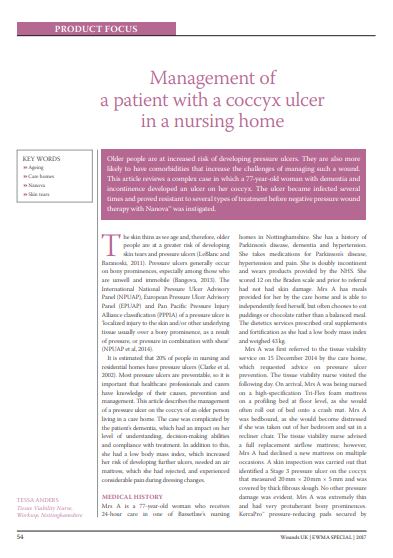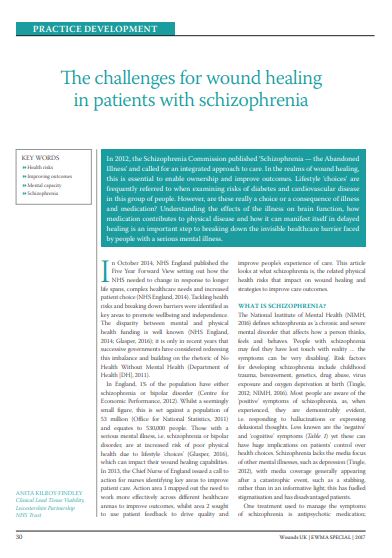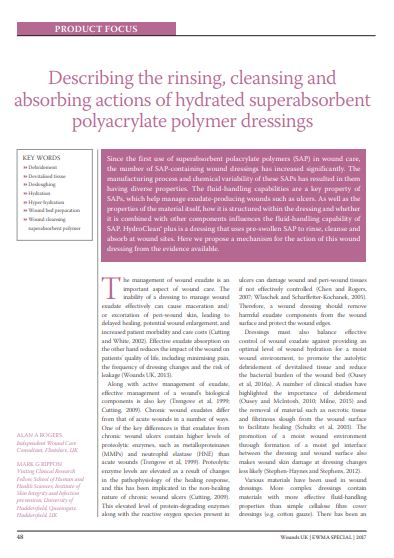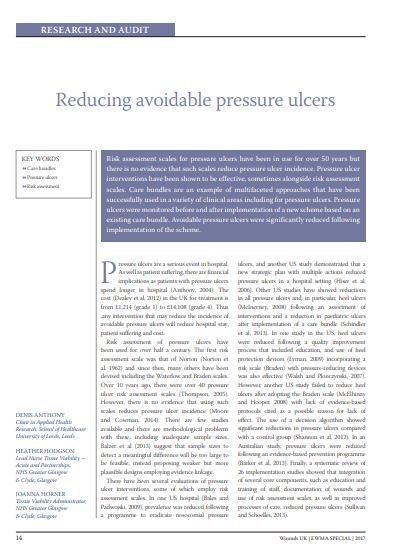The World Health Organization (WHO) (2024) states there must be collaborative action to integrate mental health into primary health care. Mental health disorders are widespread and contribute significantly to disability, with the Global Burden of Disease Study estimating 970 million people (or one in eight individuals) worldwide were being affected by a mental health disorder in 2018 (Patel et al, 2018).
Research consistently demonstrates that individuals with mental health disorders face higher mortality rates, with up to three times greater risk of premature death compared to the general population (Whiteford et al, 2010; GBD 2019 Diseases and Injuries Collaborators, 2020; Murray et al, 2020). Individuals with mental illness are at an increased risk of developing physical health issues compared to the general population and, on average, experience a 17-year shorter life expectancy (Byrne, 2018). The rates of chronic conditions, including diabetes and cardiovascular diseases, are higher among those with mental illness, which, in turn, raises their likelihood of developing chronic wounds (Ilyas et al, 2017). NHS England (2025) has stated that people living with severe mental health illness face one of the greatest health equality gaps in England, identifying that Integrated Care Boards should be strongly encouraged to consider the physical health needs of all patients severely affected by mental health illness to promote mental and physical health and prevent ill health.
Screening for physical health conditions is crucial in mental health nursing practice, but evidence shows that these conditions often go undetected, and when they are identified, they are frequently poorly managed (Edward et al, 2011; Haynes and Greenwood, 2011).
The interrelationship between physical disorders and mental illness is a significant area of study. The complexity of this connection has been emphasises by McInnes et al (2022) and the Australian Institute of Health and Welfare (2020). Historically, these two domains have often been treated independently, despite evidence showing how intertwined they can be (Ohrnberger et al, 2017). NHS England (2025) have stated integrated care systems and service providers should be strongly encouraged to consider the physical health needs of all people severely affected by mental illness through developing comprehensive annual physical health checks.
Wounds can have a significant negative impact on psychological well-being, including anxiety and depression (Ousey and Edward, 2014; Wiechman et al, 2016; Zhou and Jia, 2016), as well as increased pain, increased risk of infection and increased recurrence of wounds (Natovich et al, 2016; Pedras et al, 2018; Balikji et al, 2022). It is essential mental health practitioners can identify skin at risk of impaired integrity, prevent skin damage, assess and treat a range of wound types while managing the underlying mental health condition.
The project
Surrey and Borders Partnership NHS Foundation Trust is the leading NHS provider of mental health, well-being and drug and alcohol services across Surrey and northeast Hampshire, serving a population of 1.3 million with 10 inpatient units. It is also the main provider of learning and neurodevelopmental disability services. They are a small team of three physical registered health practitioners who support registered mental health nurses (RMNs), nursing associates and healthcare assistants in supporting staff to manage the physical health needs of people who use our services, including infection prevention and tissue viability.
Within the Trust, there is no direct access to tissue viability specialists or specialist services. The physical health team review all referrals, attend unit rounds to collect information, develop care plans and treat the wounds. However, the physical health team are not specialists. When a wound is classified as complex, infected or hard to heal, staff do not possess the appropriate capability and competencies they are required to book secure transport to leave the units to allow service users to access services with an RMN escort. This leaves units with low staffing levels and can be a source of anxiety for the service user.
The team recognised that they required financial support to develop and implement a project that would allow for development of educational and training resources for RMNs and to raise awareness of wound management for nursing associates and healthcare assistants. The team also wanted to standardise wound dressings across the Trust to reduce inappropriate use and reduce wastage. We anticipated these changes would improve quality of life outcomes for service users.
An application was submitted to URGO Medical Innovation Awards with a project plan to develop and implement an educational resource and introduce standardised dressings across the Trust. The application was successful, and the project commenced September 2023 for a 12-month period.
The project had four aims:
- Improve quality of life outcomes for service users with a wound
- Improve wound care delivery
- Reduce the need for transfer of service users to acute hospitals for wound care interventions
- Reduce dressing wastage
Understanding the current situation
The first element of the project was to undertake an audit of current wound types, dressings in use, staff knowledge and skills in wound care. A range of different wound types were identidied [Table 1].
A questionnaire was distributed to mental health nursing staff across the 10 inpatient units. The aim was to understand the level of their wound care education, if they would be interested in further wound care training, if they would be interested in shadowing the physical health team, asking about their ability to identify a range of wound bed tissue types and the level of confidence of staff in wound care management.
Fifteen staff responded – five registered nurses, one nursing associate, eight healthcare assistants and one student nurse. Review of the questionnaires identified:
- 27% of staff had completed extra training in wound care.
- 87% of staff had an interest in undertaking further wound care training.
- 93% of staff had an interest in shadowing the physical health team.
- 13% of staff could correctly identify slough.
- 13% of staff could identify the correct dressing for managing slough.
- 27% could recognise a necrotic wound.
- No staff answered that they could manage a necrotic wound.
- 27% of staff could identify incontinence-associated dermatitis.
- 60% of staff identified as being able to manage incontinence-associated dermatitis.
- 13% of staff said they could recognise granulation and manage this tissue type.
Staff were asked how confident they felt in performing wound care on a scale of 1-10 with one being the least confident and 10 being very confident. The average staff confidence was 4.06.
Through individual conversations, service users were asked about their wound care experience. They reported they would prefer to receive wound care in the mental health unit rather than being transferred to the acute hospital or an accident and emergency unit as they found these units to be overstimulating and overwhelming. They also preferred to be treated by staff who, they felt, understood their mental health needs and understood trauma informed care.
Trauma-informed care is an approach to health and care interventions, which is grounded in the understanding that trauma exposure can impact an individual’s neurological, biological, psychological and social development (Office for Health Improvement and Disparities, 2022). It consists of six key principles:
- Safety.
- Trustworthiness.
- Choice.
- Collaboration.
- Empowerment.
- Cultural consideration.
Development of the project
The physical health team visited all clinical areas to review the choice of dressing products and storage areas for products. The clinical areas are all locked and secure; as such, there is a requirement that dressings cannot be used as a potential ligature (e.g. bandages), with an at-risk assessment being essential prior to any compression being used. It was noted there were a range of wound products, many of which were out of date. Many contained an antimicrobial and these were the dressing of choice. Staff stated they wanted to prevent an infection so would choose these products as first choice even if the wound was not displaying signs and symptoms of infection. Staff reported they transferred service users to an acute hospital if there were signs of systemic infection, service users refused antibiotic therapy, wounds required suturing, or the RMN/physical health team had any concerns about the wound, or the wound was perceived to be complex.
Overall, the physical health team identified there was a lack of in-depth knowledge of wound care, no standardised approach to choosing and ordering appropriate wound dressings to manage a range of wound types and limited access to complete education programmes for RMNs in this specialist area.
It was apparent the physical health team also required education and skills development in wound care if they were to be able to effectively develop and cascade an in-house education programme to all RMNs.
Education
During 2023–2024, two of the three physical health site practitioners attended and successfully completed university modules in tissue viability. The third practitioner was due to commence a university module in September 2024, but left the Trust prior to the course commencing. The Trust has agreed to support all newly employed physical health team practitioners to attend formal tissue viability courses as an integral part of their role.
Attendance on the courses has improved knowledge and confidence and allowed the team to develop and implement an education training package for all RMNs. Additionally, URGO Medical clinical specialist staff have supported the team by delivering lower limb and compression training to the physical health team that we anticipate will support the team in improving early recognition and management of venous insufficiency, early identification of wound infection and appropriate wound care management with our service users.
Prior to disseminating the education/training programme, the physical health team discussed results of the audit and the planned education/training programme with managers and matrons where they agreed to encourage RMNs to attend the sessions.
The first tranche of education/training programme was developed as a half day training course to allow for feedback and further development. The feedback was overwhelmingly positive leading an extension of the education/training to a full day which is being delivered on a regular rotation bi-monthly. We did have some challenges during the sharing of information with poor attendance at education sessions due to staff shortages. We are reviewing delivery of future educational sessions to ensure staff can attend and are considering a full day educational event and online learning.
Fundamentals of wound care are presented including wound bed assessment, identification of wound infection, tissue type, exudate management, pain management and dressing type alongside care plan development. Further support is offered to all staff through mentorships with the physical health team providing shadowing opportunities to improve skills and confidence. Integral to the programme is education and training regarding care plan documentation, all staff are informed that the wound must be assessed at every dressing change with any changes to the wound, changes in pain level, nutrition status and measurements of the wound clearly documented, and evaluation dates set. Wound dressings used should also be recorded with a rationale for their choice.
This has been impactful to services in several ways. We have held several informal meetings with staff who have indicated their confidence in wound management has increased. There has been a reduction on reliance of transferring service users, with RMN escorts, to the specialist acute hospital tissue viability services. For the future, we will be auditing the impact of the perceived reduction in transfers.
Standardising wound products and reducing waste
During the audit stage, it was identified there was no standardisation of wound products with some units having no stock. All products in use have been reviewed and there is now a regulated dressing cupboard with a range of products that will be appropriate for most wound types. Standardisation of wound dressings has resulted in a reduction of waste from out-of-date products and ensures safer practice.
To reduce inappropriate use of antimicrobials, all service uses have their wound reviewed by the physical health team, with regular evaluations to ensure antimicrobials and antibiotics are used appropriately and for the prescribed amount of time. Anecdotally, we believe this has resulted in a decrease in inappropriate antimicrobial use, but we will audit this in the future. The use of supplies is monitored centrally, but it is anticipated as confidence and capabilities in wound management increase these can be measured at local level. Colour-coded posters that allow quick and easy association of dressing to tissue type and exudate levels have been included on the units to support decision making. To date, feedback from staff has been positive with staff saying wound dressings are now easily accessible and staff can easily identify the most appropriate product to use.
One of the original aims was to evaluate quality of life outcomes for the service users following implementation of the project. We recognise this should have commenced prior to the project starting; however, we have a focused plan to evaluate quality of life through interviewing staff and discussing with service users their experiences pre and post implementation of the project.
Summary
In the interest of patient safety and improving clinical outcomes, it is important to implement evidence-based wound care practice. We have taken initial steps to improve care for service users to promote equity of care and to support staff in the delivery of evidence-based practice. Our original aims had been to:
- Improve quality of life outcomes for service users with a wound
- Improve wound care delivery
- Reduce the need for transfer of service users to acute hospitals for wound care interventions
- Reduce dressing wastage.
On reflection, we are making positive steps towards meeting these outcomes. We now need to formalise an evaluation of the original aims. Our ability to deliver evidence-based training to our mental health nursing teams has increased. By strengthening our knowledge base, we have been able to deliver more meaningful, hands-on learning. If we were to undertake this project again, we would carry out an audit to understand the current knowledge levels, accurate use of wound dressings and amount of waste and would explore with service users their experiences of wound care. Following completion of the project we would carry out a second audit to compare any changes.
The URGO Medical Innovation Award both allowed this project to commence and provided the motivating force to implement progressive change within this challenging environment. It has empowered a variety of practitioners within the Trust to be able to deliver high quality wound care and there is a new enthusiasm amongst the nursing teams to continue to improve the care that is being delivered. It means a lot to our service that we were awarded this prize. We, as a physical health team, would encourage anyone who would benefit from further support when considering improvement projects in their own practice to apply for the URGO Medical Innovation Award.







